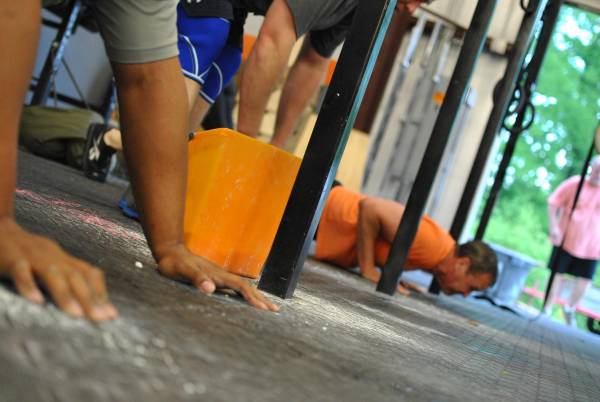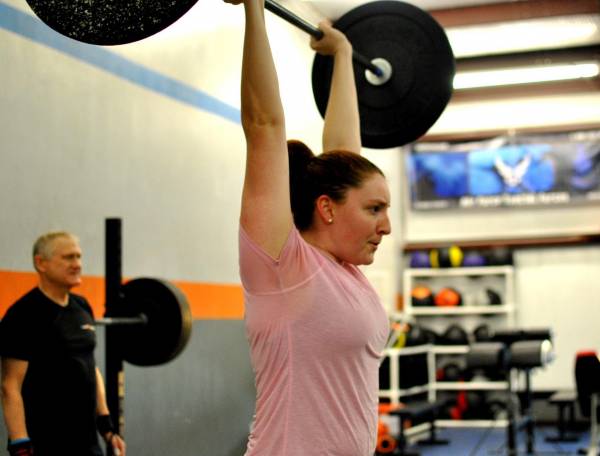Think of one way you could improve your current training program. Got one? Good.
Bet you thought of adding something rather than taking something away, didn’t you? You’re not alone. Most of us will rarely think of program development in terms of taking something away. However, removing elements can have multiple substantial positive impacts on your training.
Let’s take a look at why you should strongly consider streamlining your training program. I will also offer up offer some guidance on how you can do this.
Recovery – Less work equals better recovery.
This is perhaps the most obvious one. Less work in one workout means less to recover from for the next one. Less to recover from means better recovery. Better recovery means you can hit the next workout harder. And if you have simplified this workout too, you can apply yourself to just a few essential elements. See how it all comes full circle?
Quality – Seek virtuosity.
Ever felt that the more you do, the more likely it is that some of it is going to work? Perhaps this has some truth to it, but is it really the best way to go about your training? Your time is limited. Make the most of it by squeezing every last drop of benefit out of everything you do. Slow down your eccentric movements. Pause at the bottom of your squats. Strive to make every rep a perfect one. Seek virtuosity. If you make wise movement choices, doing a few things very well will have far more impact than doing many things reasonably well.
Intensity – More is not always more.
If you are one of those people who want to do everything, and in order to accomplish this you train day after day, perhaps even twice a day, without rest or recovery because you feel you “don’t need it,” then please take a good look at your program and streamline it using the guidelines in this article. It may be hard to hear, but the reason you don’t need the rest is because you are continually hitting your workouts below the intensity you should be. Rest hard, work hard, repeat.
Assessment– See the effectiveness of individual elements.
A program that has constantly been added to and changed over the years can be difficult to assess, unless it has been done particularly systematically. It’s not too late though – you have two options. Option one: take out an element and assess it’s impact on your performance, for better or worse. Not a bad approach, but could take a while. Option two (the better one): strip your training down to the bare essentials and add elements one at a time to test their effectiveness. Build yourself a program where there are no wasted elements, one that you know works for you.
 I hope that by this point in the article, you can see the benefits of a streamlined approach and are starting to take a look at your timetable with a keen eye and a fine-toothed comb. You need to be objective and critical on this. Of course you feel that everything you do at the moment has value, or you wouldn’t be doing it.
I hope that by this point in the article, you can see the benefits of a streamlined approach and are starting to take a look at your timetable with a keen eye and a fine-toothed comb. You need to be objective and critical on this. Of course you feel that everything you do at the moment has value, or you wouldn’t be doing it.
Here are a few pointers to get you thinking along the right lines:
What to Keep:
We can look at this in a number of ways, but perhaps the most important one is to ensure that the fundamentals of your training are balanced. Dan John proposes that the five basic movements from the strength coach’s perspective are push (e.g. press), pull (e.g. rows), hinge (e.g. kettlebell swings), squat (e.g. front squats) and loaded carry (e.g. farmer’s walks). This is a fantastic basis for assessing your program. These can be broken down further, for example push can be split into horizontal push and vertical push. I will cover the details of this in another article. In the meantime, make sure that these essential movement patterns are both included and reasonably well balanced within your training.
Carry Over:
This is such an important concept in all aspects of training. When coaching, particularly at a foundational level, I will often use coaching cues that not only correct the primary issue, but carry over to fix other aspects of the lift without the client realizing. You can apply the same principles to your training program. Look to fill your program with fundamental functional movements that have high carry over to others. A great example of this is squats. Many times when I have embarked on a squat program, I have tested my deadlift beforehand and retested it after. The results speak for themselves – my deadlift rep maxes always increase, despite not deadlifting at all for the duration of the program. Get stronger in the squat and most things, including your pull ups will likely improve. Don’t believe me? Try it!
The above two paragraphs combine to offer guidance on what to take out of your program. If you have an abundance of one type of movement pattern at the expense of others, it is likely surplus to requirements, unless you are rehabbing or building up a weakness. Remove this extra work and focus your energies on the ones that matter.
 The other aspect is carry over. Pay little regard to those aspects of your training that have minimal value outside the movement itself. Seek to reduce or eliminate the movements that are very tough to recovery from whilst providing little carry over to the rest of your training. An example of this for me is high-rep wall balls. Such elements are not worthless, but they are expendable in terms of core programming.
The other aspect is carry over. Pay little regard to those aspects of your training that have minimal value outside the movement itself. Seek to reduce or eliminate the movements that are very tough to recovery from whilst providing little carry over to the rest of your training. An example of this for me is high-rep wall balls. Such elements are not worthless, but they are expendable in terms of core programming.
These are some of the things I have in mind when taking an objective overall look at a training plan, whether my own or those of my clients. In fact, I can condense these all into one simple rule. This question can be used to determine whether any aspect of any training program should be included or not:
“Is the juice worth the squeeze?”
In other words, is the training benefit worth the effect it will have on your body? Apply this question to reps, movements, workouts, competitions, or in fact any part of your program. Answer yes and it’s in, answer no and it’s out.
A simple approach? Absolutely. Why overcomplicate the approach to simplify your training? It’s simple – take a simple approach to simplify your training and you will simply get results.
Photos courtesy of CrossFit Impulse.






